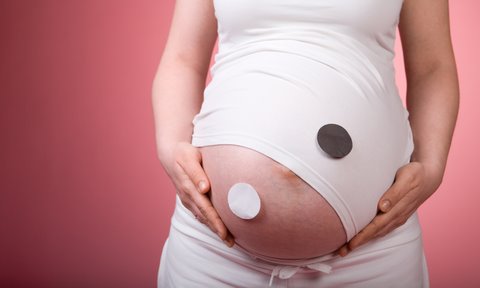From Acufinder.com
By: Diane Joswick, L.Ac., MSOM
Pregnancy is an amazing time in a woman’s life. Many women report feeling healthier than they have ever felt before; however, the physical growth of the baby and changes in hormone levels can bring about pain, discomfort and a variety of health problems.
Acupuncture and Oriental medicine can provide a safe, effective alternative for many of the health complications that may arise before, during and after pregnancy. A growing number of women are choosing acupuncture to use throughout their pregnancy and as an optional treatment for an overdue or difficult labor.
Planning for a Healthy Baby
Healthy parents produce healthy babies. With acupuncture and Oriental medicine, parents can improve their health to create the most optimal environment for their unborn child. In addition to their ability to strengthen, support, and balance overall health and well-being, acupuncture and Oriental medicine are an effective treatment for regulating menstruation and hormone levels, reducing stress and addressing any pre-existing medical conditions or concerns that a woman may have.
Acupuncture during Pregnancy
Acupuncture and Oriental medicine can play a vital role in the comfort of a pregnant woman. There is strong evidence to support that acupuncture is highly effective at treating some of the most common problems experienced during pregnancy including morning sickness, heartburn, insomnia, water retention and sciatica.
Here is a list of some of the problems that an acupuncturist often treats during pregnancy:
- Nausea and Vomiting
- Heartburn
- Constipation
- Hemorrhoids
- Edema and Swelling
- Urinary Tract Infection
- Pelvic Pain
- Neck and Back Pain
- Sciatica
- Carpal Tunnel Syndrome
- Leg Cramps
- Fatigue and Exhaustion
- Insomnia
- Anxiety and Depression
Acupuncture for Childbirth
While there are acupuncture points that can provide natural pain relief during labor, acupuncture is more commonly used to induce labor. There are several points that stimulate contractions and influence cervical ripening. There is also an acupuncture point that has been found to turn a breech baby.
Acupuncture Postpartum
Many women feel depleted after the birth experience. Acupuncture and Oriental medicine can help the transition of those first few months after birth to ensure a quick recovery. Postpartum care focuses on the physical, emotional and psychological recovery of the mother from the effects of pregnancy and labor, as well as encouraging breast feeding.
Here are some of the postpartum disorders that can be treated with acupuncture:
- Fatigue
- Postpartum Depression
- Mastitis
- Insufficient or Excessive Lactation
- Post Operative Healing
- Night Sweats
Safety of Acupuncture During Pregnancy
Acupuncture is safe to use while you are pregnant; however, there are some points that can cause contractions and should NOT be needled during pregnancy or should be used with extreme caution.
Acupuncture Points to Avoid During Pregnancy
- Large Intestine 4
- Spleen 6
- Gallbladder 21
- Points on the sacrum
- Point on the lower abdomen
- Point on the low back
There are also many herbal remedies that are contraindicated during pregnancy. Always err on the side of caution with all herbs and medications while you are expecting.
Study: Acupuncture Point, UB 67, for Turning a Breech Baby
An acupuncture point on the small toe of the foot (Urinary Bladder 67) has been found to effectively revolve fetuses in breech presentation.
In an Italian study, 240 women at 33-35 weeks of gestation carrying a fetus in breech presentation were randomized to receive acupuncture plus moxibustion (an herb used to apply heat to an acupuncture point) or to be assigned to the observation group. At delivery, the proportion of babies that had turned from breech position to vertex (head-down) position was 53.6 % in the group treated with acupuncture while the proportion of babies that had turned from breech position to vertex position in the observation group was 36.7%.
Source: J Matern Fetal Neonatal Med. 2004 Apr;15(4):247-52


